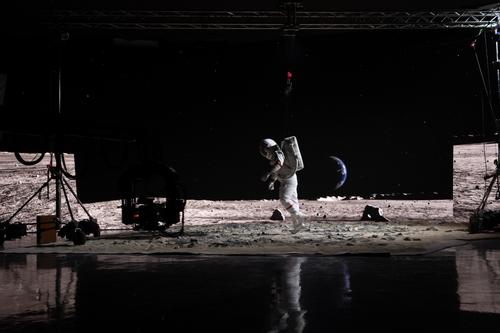Before and After: What is pre and post production?
Filmmaking is a complex process. From the very first conception of an idea right through to the final editing, a production goes through multiple stages before it eventually hits the screen. Actually shooting it is just one link in the chain – a lot of production work happens before the cameras start rolling and long after they stop. These before and after phases are called ‘pre-production’ and ‘post-production’, and are fundamental to the filmmaking process.
What is pre-production?
In the broadest sense, pre-production is everything that happens before shooting takes place, to ensure its smooth operation. A pre production checklist would include things like:
- Scripting
- Storyboarding
- Budgeting
- Location scouting
- Hiring equipment and crew
- Casting
Pre (virtual) production
Increasingly, this traditional pre production phase is being disrupted by virtual production (VP) methods. VP uses camera tracking technology and advanced graphics engines to create virtual, interactive objects and environments for the film and broadcast industry. The BBC, The Weather Channel, and Dutch-broadcaster NEP are just a few organisations to have utilised VP.
Among the many benefits of this developing technology is that it reduces uncertainty for producers. During the pre production phase using VP, the smallest of details can be visualised and settled on; environments, settings, and initial effects can all be prepared at the pre-pro stage. This means that producers can start to iterate much earlier than with traditional production methods, saving time (and money) later on.
What is post production?
Just as pre production is preparing for a shoot, post production is preparing for release. It’s the last phase of the production process and is focused around turning raw footage into the final product with editing and special effects. The post production process involves multiple departments, and generally includes the following:
- Picture editing (or ‘cutting)
- Sound editing, sound effects and mixing
- Visual effects
- Colour correction
- Animation
How long does post production editing take?
Depending on the complexity of the production, the post production phase can take anywhere from 4 to 12 weeks to complete. If significant edits have to be made due to mistakes or a change in creative direction, then this stage can take a lot longer.
Virtual post production
When VP methods are used, the post production phase is either shortened considerably or eliminated entirely. As mentioned, this is because there are far fewer surprises. Rather than wait weeks or months to watch back over footage, producers can view and edit shots in real time when in the studio.
It’s worth mentioning, however, that the time required in post-production is largely dependent on which VP technologies and software are used. As a general rule, LED screens (such as those used by Italian post-production company, Neticks Group Evolution) tend to need almost no time in the post-production phase. This is because they provide a final composite on set in realtime, with natural-looking reflections and shadows, and don’t require colour corrections between the foreground and background. Whilst LED screens give producers the chance to shoot a near-final product on set, though, they only allow a limited degree of movement for actors.
A more flexible VP option in this sense would be the green screen. Using camera tracking tech, actors can move around a pre-constructed virtual set, which the production team can view through a monitor. This VP option requires slightly more time in post production as lighting needs to be corrected, props removed, and effects added.
Regardless of which VP technology is used, however, it’s likely to significantly reduce time in post production when compared to traditional production methods. In essence, VP shifts the production team’s mentality from ‘Let’s fix it in post’ to ‘Let’s deal with this now’.
Pre and post production remain core elements of the filmmaking process, but they’re changing. With an increasing use of VP technology, more emphasis is being placed on ‘front-loading’ productions; more accurate decisions and editing can take place earlier on, reducing the risk of guess-work whilst in the studio and stretched budgets in post production. In the future, final edits will be ready almost as soon as the cameras have stopped rolling for the day.
Mo-Sys is the market leader in virtual production camera tracking technology for film and broadcast. Working with production teams across the world, we’ve helped to create engaging, immersive experiences that have reached large audiences. To learn more about the capabilities of virtual filmmaking, check out Mo-Sys Academy – our dedicated resource centre for emerging filmmaking professionals, and sign up to our newsletter.




